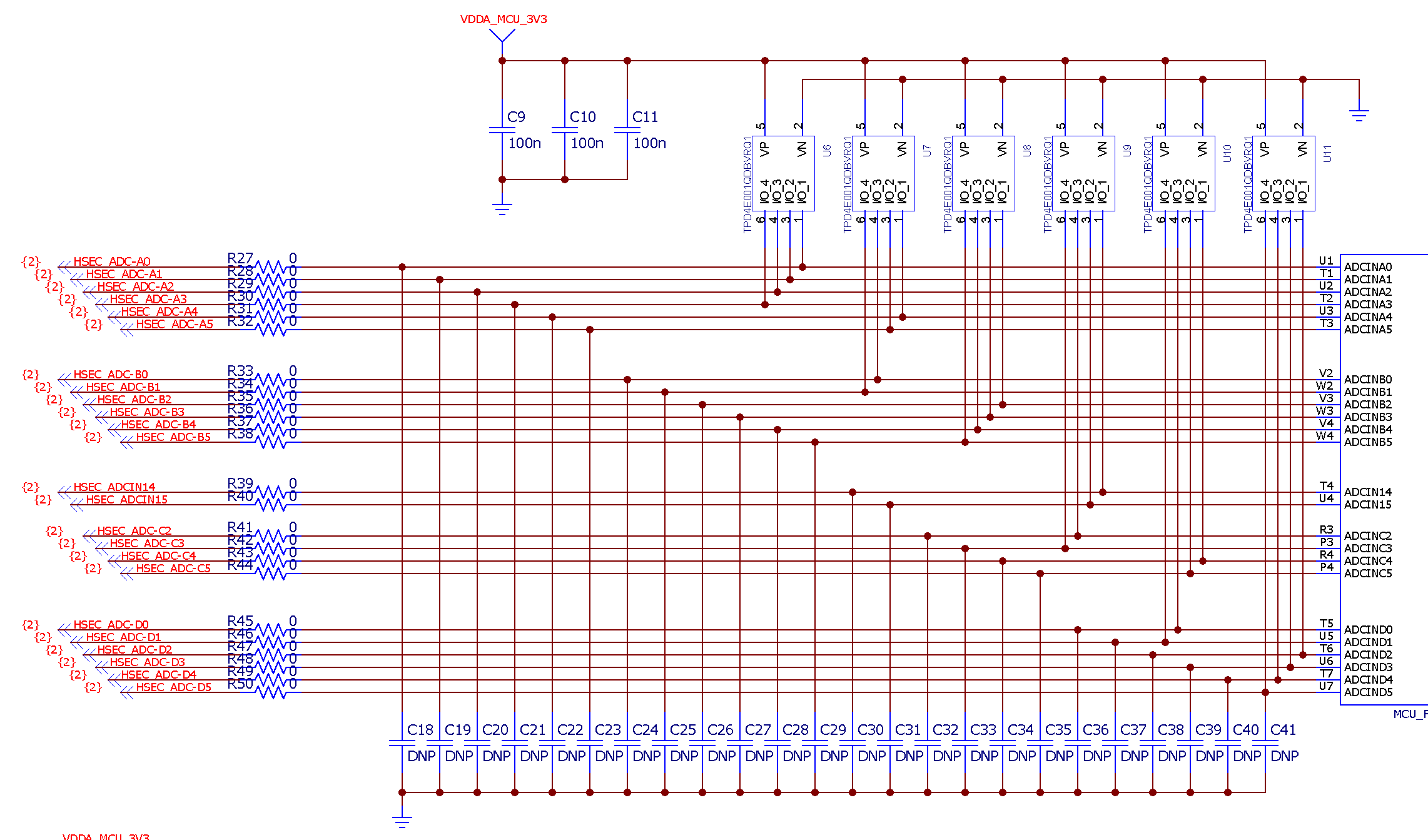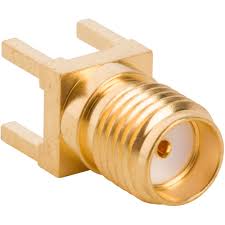SPRUI76B March 2017 – June 2022
4.3 Evaluation of the Analog-to-Digital Converters (ADCs)
When using the F28379D on-chip ADCs, there are some useful guidelines to help realize the performance numbers listed in the TMS320F2837xD Real-Time Dual-Core Microcontrollers data sheet. This is especially true for the AC parameters such as: SNR, THD, and SINAD. Furthermore, it can also be shown that there is a direct correlation between the SNR of the ADC results and the spread of ADC codes seen for a DC input. These tips will improve the range and standard deviation of a DC input as well. Finally, while topics addressed will be with respect to the controlCARD, they are also applicable to other implementations using the F28379D MCU.
On-board resistors and capacitors: By default (Figure 4-3), all inline resistors to the ADC pins are a simple 0-Ω shunt and all capacitors to the ground plane are not populated. While this circuit can be used to supply the ADC inputs with a voltage, likely both the resistor (R) and capacitor (C) will need to be populated based on the voltage source's characteristics. Referring to the ADC Input Model, the ADC input has its own RC network made up of the internal sample and hold capacitor, switch resistance, and parasitic capacitance. By changing the inline resistance and parallel capacitor, the input circuit can be optimized to assist with settling time and/or filtering the input signal. Finally, it is recommended in general to use Negative-Positive 0 PPM/°C (NP0/C0G) capacitors as these have better stability over temperature and across input frequencies than other types of capacitors.
 Figure 4-3 Partial Schematic Showing Default R and C values
Figure 4-3 Partial Schematic Showing Default R and C valuesVoltage source and drive circuitry: While the on-chip ADCs are configurable 12-bit/16-bit architectures (4096/65536 distinct output codes when converting an analog signal to the digital domain), the translation will only be as precise as the input provided to the ADC. The typical rule of thumb when defining the source resolution to realize the full specification of an ADC is to have a 1-bit better source than the converter. In this case, that would mean that ideally the analog input should be accurate to 13 bits for a 12-bit mode and 17 bits for a 16-bit mode.
Typically, voltage supplies or regulators are not designed to be precise, but rather accommodate a wide range of current loads within a certain tolerance, and for this reason, are not ideal to show the performance of a higher bit ADC, like the one on the F28379D. This does not take into account that many times the supply in question is providing the main voltage to power the MCU itself, which also introduces noise and other artifacts into the signal.
In addition to the quality of the input signal, there is also the aspect of the load presented to the ADC when it samples the input. Ideally, an input to an ADC would have zero impedance so as not to impact the internal R/C network when the sampling event takes place. In many applications, however, the voltages that are sampled by the ADC are derived from a series of resistor networks that are often large in value to decrease the active current consumption of the system. A solution to isolate the source impedance from the ADC sampling network is to place an operational amplifier in the signal path. Not only does this isolate the impedance of the signal from the ADC, it also shields the source itself from any effects the sampling network may have on the system.
Recommended source for evaluation: The Precision Signal Injector (PSI) EVM from TI was used to validate the ADC performance on the F28379D ControlCARD. This EVM supports both single ended as well as differential ended outputs using a 16-bit digital-to-analog converter (DAC) as the signal source then passed through a high precision op-amp with post amplifier filtering. The EVM is powered and controlled through a standard USB connection from a host PC and includes a GUI to control its output. The outputs are routed through single or dual SMA type connectors. It is highly recommended to place additional female SMA connectors (Figure 4-4) on the controlCARD docking station to receive the signal via SMA cable for best noise immunity. For the local RC network, 30-Ω resistors and 300 pF capacitors were used. Using this setup, the ADC parameters were observed to be consistent with the published numbers in the TMS320F2837xD Real-Time Dual-Core Microcontrollers data sheet.
 Figure 4-4 Female SMA Connector
Figure 4-4 Female SMA Connector